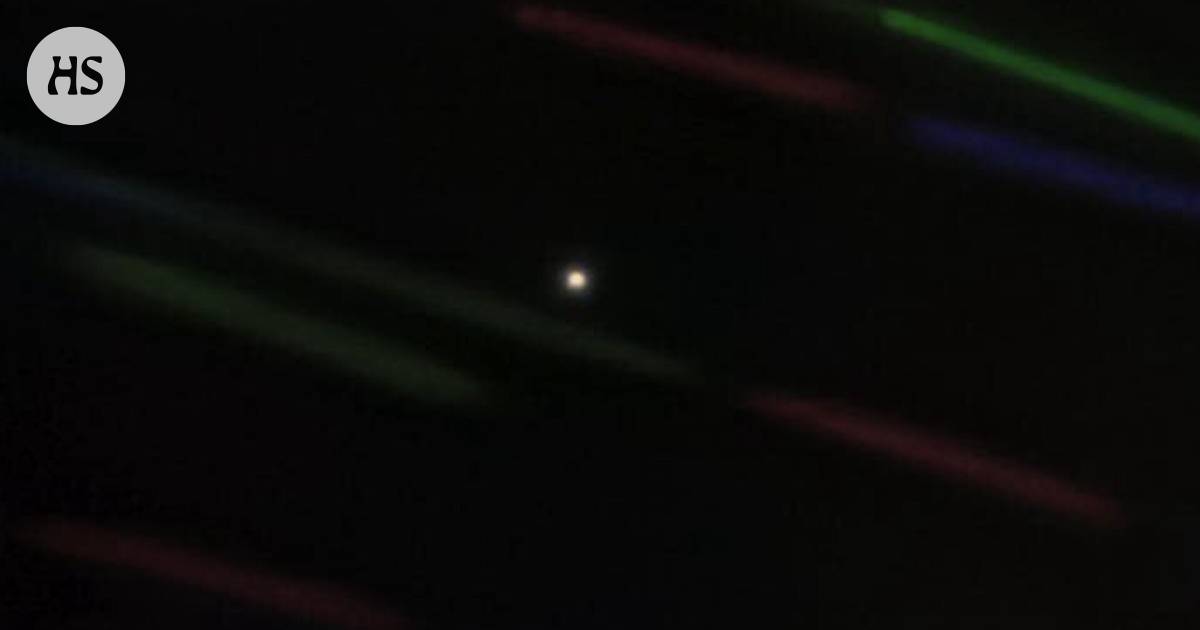Six|Even with a telescope, the hobbyist cannot see a mini-moon whose diameter is tens of meters at most.
The summary is made by artificial intelligence and checked by a human.
The small asteroid 2024 PT5 will orbit the Earth for about two months from the end of September.
The mini moon belongs to the asteroids of Arjuna. They orbit the Sun at approximately the same distance as the Earth.
The mini moon is not visible to the naked eye or even in amateur telescopes. Professionals follow its movements.
Astronomers have only verified a few mini-moons, even though these small asteroids are constantly visiting near Earth.
Main will soon be joined by another moon. The small asteroid 2024 PT5 will orbit the Earth for about two months at the end of September.
Earth’s gravity captures the tiny asteroid on September 29. The mini-moon will orbit the Earth until approximately November 25.
The diameter of the mini-moon is tens of meters at most. It is so small and so faint that it is not visible to the naked eye, not even with amateur telescopes, says the website Phys.org.
For December that asteroid breaks away from Earth’s gravitational field and returns home to the asteroids of Arjuna.
They orbit the Sun at the same distance as the Earth. Most asteroids are located in the asteroid belt between Mars and Jupiter.
The minimoon was spotted on August 7 by a group of astronomers observing newly discovered objects in near space, says the news channel CNN.
The Arjuna asteroids are small asteroids that orbit the Sun in orbits very similar to Earth’s, according to the website Space.comille professor of astronomy Carlos de la Fuente.
He is the lead author of the study following 2024 PT5 and works at Complutense University in Madrid, Spain. The research on the mini moon was published by a scientific journal The Research Notes of the AAS.
Arjunan asteroids sometimes approach the Earth from a distance of about 4.5 million kilometers at low speeds.
The asteroid may only be moving at about 3,500 kilometers per hour. Such an asteroid may remain temporarily in the Earth’s gravitational field. Now it’s like this.
During that time, the mini-moon orbits the Earth at a distance of about 4.2 million kilometers. It is about ten times the distance between the Earth and the Moon.
However, the discovered mini-moon does not make a complete revolution around the Earth.
“You could say that 2024 PT5 is going close to the Earth like window shopping,” Carlos de la Fuente compares the asteroid’s rush to “going to the store”, i.e. remaining permanently orbiting the Earth.
Minikuita there are two varieties.
Sometimes an asteroid makes one or several revolutions around the Earth. Then the Earth’s gravity affects the asteroid for one or several years.
During a short visit, the mini-moon may not even make a full revolution around the Earth.
Visits of minimoons near the Earth have only recently been recorded.
The objects 2006 RH120 and 2020 CD3 were intercepted by Earth for a longer time. So they circled the Earth in the discovery years of 2006 and 2020 or longer.
Astronomers mention at least three of the short interceptions, from the years 1991 and 2022 and the now approaching 2024.
There are several short visits in one decade, says de la Fuente. Long visits of mini-moons fall close to the Earth every ten or twenty years.
The reason is often that there are fluctuations in the Sun’s gravitational field.
A mini moon or mini moons can orbit the earth all the time, but they just haven’t been observed.
Unfortunately 2024 PT5 is barely visible to humans on Earth during fast travel.
“The target is too small and dim for amateur telescopes and binoculars,” says de la Fuente.
The target is clearly visible in the telescopes of those who follow space professionally. Carlos de la Fuente’s group is watching the approaching mini-moon with large telescopes in the Canary Islands.
